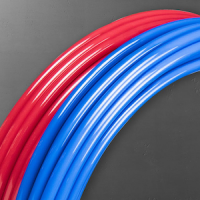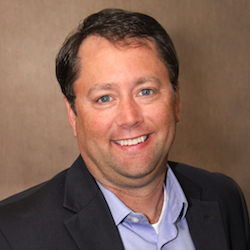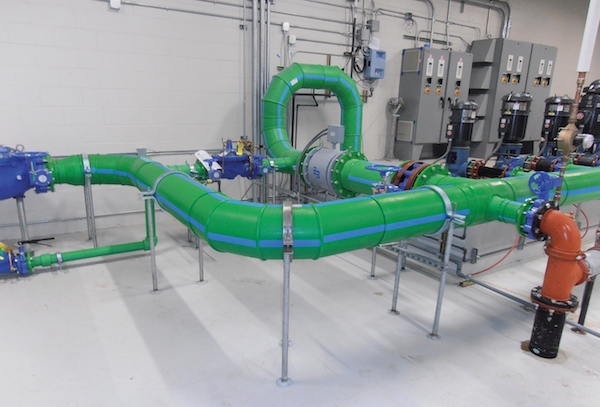Classes to be held in Colorado and New Hampshire Broomfield, Colo. — Viega, LLC has announced its Winter 2019-20 lineup of courses at its seminar centers in Broomfield, Colo., and Nashua, N.H. The offerings include topics from commercial piping solution to radiant design and LoopCAD. With two fully equipped state- of-the-art seminar centers, Viega is Read more
PVF
Classes to be held in Colorado and New Hampshire
Broomfield, Colo. — Viega, LLC has announced its Winter 2019-20 lineup of courses at its seminar centers in Broomfield, Colo., and Nashua, N.H.
The offerings include topics from commercial piping solution to radiant design and LoopCAD. With two fully equipped state- of-the-art seminar centers, Viega is an industry leader in supporting the trades and helping contractors become more versatile, skilled and efficient. To date, more than 40,000 people, from self-employed contractors to employees of large firms, have taken courses at the centers.
The classes are taught by experts with years of experience in the field and offer ample hands-on experience. Attendees leave with skills and knowledge that will show immediate benefits on the job.
Training seminars are listed below:
Radiant Design, Piping and Controls
Jan. 27-29, Nashua, N.H.; March 3-5, Broomfield, Colo.
Covers design theory and practice, piping arrangements and control strategies. Includes hybrid systems, multiple temperature piping arrangements and system component placement.
LoopCAD
Feb. 11-12, Nashua; Jan. 22-23, Broomfield
How to use LoopCAD software for radiant design and layouts. Covers heat loss, drawing layout, material selection and snow melt.
Commercial Piping Solutions
Dec. 3-4 and March 18-19, Nashua; March 3-4, Broomfield
Covers Viega systems and products and their appropriate uses. Includes PureFlow, ProPress and MegaPress; hybrid systems; installation techniques; project savings; hands-on installation and competitive information.
Hydronics 101 & Radiant Systems
March 3-4, Nashua; Jan. 16-17, Broomfield
Provides a basic understanding of how hydronic systems work. Topics include methods of heat transfer, piping materials and components, control strategies and installation methods.
Carbon Steel Press Technology
Jan. 13, Nashua
Covers the use of carbon steel press systems for residential, commercial and industrial piping applications.
Stainless Steel Press Technology
Feb. 20, Nashua
Covers the use of stainless steel press systems for commercial and industrial plumbing, heating and piping applications. Properties and chemical compatibility of 304 and 316 stainless steel will be covered.
Press Technology for Fuel Gas Piping
Feb. 3, Broomfield
Covers the use of carbon steel press systems for fuel gas piping in residential, commercial and industrial applications. Fuel types such as natural gas, LP gas, diesel, fuel oil and kerosene and their implications in NFPA 54 will be covered.
NFPA 13D Fire Sprinkler
Covers NFPA 13D requirements, system design, installation concerns and energy code compliance.
For more information and to register, click here.

Viega PureFlow PEX pipe and fittings have been listed by Underwriter Laboratories (UL) as approved for use in exposed fire sprinkler systems in basements. The UL listings mean builders and contractors are now able to use PureFlow, Viega’s versatile system of PEX pipe and fittings, throughout an entire residential fire sprinkler system, said Seth Larson Read more
 Viega PureFlow PEX pipe and fittings have been listed by Underwriter Laboratories (UL) as approved for use in exposed fire sprinkler systems in basements.
Viega PureFlow PEX pipe and fittings have been listed by Underwriter Laboratories (UL) as approved for use in exposed fire sprinkler systems in basements.
The UL listings mean builders and contractors are now able to use PureFlow, Viega’s versatile system of PEX pipe and fittings, throughout an entire residential fire sprinkler system, said Seth Larson, product manager at Viega LLC. The listing eliminates the need for contractors who have used PureFlow PEX throughout a house to have to join it to pipe of another material in the basement.
“Contractors who prefer PureFlow for its easy handling, fast connections and reliability will be happy to know that they can save time and money now that they can use the system throughout the entire house,” Larson said.
The listings cover two types of ceiling. PureFlow can be installed and left exposed in wood joist ceiling assemblies where the following conditions are met:
- Joists are of dimensional lumber, engineered wood, wood I-joist or open web wood joists (wood floor trusses)
- Joists are of depths from 6-16 inches (152-204 mm)
- Joists are of spacing from 12-24 inches (305-610 mm) on center
- Joists can be exposed after installation
- Metal pipe hangers spaced at maximum 24 inches (610 mm) on center are used
- Listed residential automatic sprinklers of maximum activation temperature rating of 165°F (68°C)
PureFlow can be installed exposed across finished ceiling assemblies where the following conditions are met:
- Ceiling is finished with one of the following approved membranes:
- Minimum 3/8 inch (9.5mm) thickness code-complying gypsum wallboard or;
- Suspended membrane ceiling with lay-in panels or tiles having a minimum weight of 0.35 lb/ft2 (1.76 kg/m2) when installed with metallic support grids or;
- ½ inch (13mm) code-complying plywood or solid sheathing
- Metal pipe hangers spaced at maximum 24 inches (610 mm) on center are used
- Listed residential automatic sprinklers of maximum activation temperature rating of 165°F (68°C)
PureFlow is the PEX fire sprinkler system of choice for builders and retrofitters for its ease of installation, corrosion-free qualities and dependability. It’s the only PEX fire sprinkler system with an easy alignment bracket that eliminates the need for measuring when hanging pendants.
For more information on Viega, click here.

John Reutter has been named the new vice president of Finance for Uponor North America. He will lead all of the company’s finance-related teams, including Accounting, Finance, Risk Management and Legal. Bill Gray, president of Uponor North America says, “John’s experience working in the water and energy industries, assisting with integrations, incorporating financial metrics into Read more
 John Reutter has been named the new vice president of Finance for Uponor North America. He will lead all of the company’s finance-related teams, including Accounting, Finance, Risk Management and Legal.
John Reutter has been named the new vice president of Finance for Uponor North America. He will lead all of the company’s finance-related teams, including Accounting, Finance, Risk Management and Legal.
Bill Gray, president of Uponor North America says, “John’s experience working in the water and energy industries, assisting with integrations, incorporating financial metrics into strategic goals, and guiding the financial aspects of multimillion-dollar projects were key factors in his selection. We’re excited to have John as part of our senior leadership team. I’m confident he will play an important role in the continued growth of our organization throughout North America.”
Irving, Texas—The Plastics Pipe Institute, Inc. (PPI) has announced the creation of the Polypropylene Pressure Pipe Steering Committee within its Building and Construction Division (BCD). This new group will focus entirely on polypropylene pressure pipe, and is a significant development for PPI in supporting this industry. PPI is the major North American trade association representing Read more
Irving, Texas—The Plastics Pipe Institute, Inc. (PPI) has announced the creation of the Polypropylene Pressure Pipe Steering Committee within its Building and Construction Division (BCD). This new group will focus entirely on polypropylene pressure pipe, and is a significant development for PPI in supporting this industry. PPI is the major North American trade association representing all segments of the plastic pipe industry.
The Steering Committee focuses on two types of polypropylene pressure pipes: PP-R, polypropylene random copolymer, and PP-RCT, polypropylene random copolymer with modified crystallinity and temperature resistance. Both types of pipes are approved for potable hot and cold water plumbing systems, hydronic heating and cooling systems, as well as other applications.

PP-R and PP-RCT pipes are available in metric sizes ranging from 16 to 355 mm and IPS schedule 80 sizes ranging from 1/2 to 6 inches. The minimum hydrostatic pressure ratings are 160 psi at 73ºF (1105 kPa at 23ºC) and 100 psi at 180ºF (690 kPa at 82ºC) for plumbing applications, but pipes with different dimension ratios (DRs) can have higher or lower pressure ratings, as needed by the customer.
The recent formation of the Polypropylene Pressure Pipe Steering Committee (P4 SC) reflects the rapid growth and continuing acceptance of polypropylene pressure pipe in the North American market.
According to PPI President Tony Radoszewski, CAE, “PPI has been a strong advocate and technical resource for many types of plastic pipe systems since its formation in 1950, including new materials as they develop. While not new in Europe, polypropylene pressure pipes are relatively new in North America, and PPI can serve members by helping to grow this market in a technically correct and responsible manner. Pipe producers see the value in this industry collaboration. In fact, the number of polypropylene producer members at PPI has tripled since this Steering Committee was initiated in late 2017.”
The P4 SC fits well with the BCD focus on plastic pressure pipe and tubing systems used within buildings and on building premises for applications such as plumbing, water service, fire protection, hydronic heating and cooling, snow and ice melting and ground source geothermal piping systems.
The mission of PPI’s Building & Construction Division is to promote the expanded acceptance and use of high-reliability plastic pressure pipe and tubing systems in building and construction environments by providing research, education, and code and standard development with a focus on delivering sustainable and safe plastic system solutions that enrich people’s lives.
According to PPI’s BCD Director of Engineering Lance MacNevin, P.Eng. “Our first activity was to publish a new PPI webpage dedicated to PP-R and PP-RCT piping systems. This webpage – https://plasticpipe.org/building-construction/bcd-pp.html – contains technical information, lists of advantages and applications, plus links to PPI member firms that produce PP-R and PP-RCT systems.”
In addition to coordinating industry research programs, developing technical publications, and creating educational information about these systems, the PPI technical staff participates within the standards development organizations (SDOs) ASTM, CSA, and NSF, code bodies IAPMO and ICC, as well as other organizations such as ASPE, CACP, PMAC and RPA.
MacNevin continued, “The new committee will engage in a wide range of activities. For instance, supporting industry efforts to update and harmonize product standards ASTM F2389 and CSA B137.11; coordinating and publishing research on proper uses of PP systems for plumbing and hydronic applications; developing online calculators for design of PP piping systems; and creating educational content about PP materials.”
New Technical Document Now Available
The first publication related to polypropylene (PP-R) pressure pipe is PPI TN-57 Proper Integration of Copper Tubing and Components with PP-R Piping Materials for Plumbing Applications, which was published in June 2018. The purpose of this technical document is to provide information regarding proper integration of copper tubing and components with random copolymerized polypropylene (PP-R) piping materials for plumbing applications. “This document is a great example of the kind of educational content the P4 SC and PPI can generate to help the industry as a whole,” MacNevin commented. The direct link to this document is https://plasticpipe.org/pdf/tn-57.pdf
Additional information can be found on the Plastics Pipe Institute’s website: www.plasticpipe.org.
Lindon, Utah—The tariffs on imported steel and aluminum recently imposed by President Donald Trump immediately raised concerns of an adverse effect on steel and aluminum prices. The American Institute of Architects issued a statement saying, “The administration’s announcement of new tariffs on steel and aluminum imports threatens to drastically increase the prices of many building Read more
Lindon, Utah—The tariffs on imported steel and aluminum recently imposed by President Donald Trump immediately raised concerns of an adverse effect on steel and aluminum prices. The American Institute of Architects issued a statement saying, “The administration’s announcement of new tariffs on steel and aluminum imports threatens to drastically increase the prices of many building materials specified by architects.” The Associated General Contractors of America warned that the tariffs “could wreck the budgets for numerous infrastructure projects and private nonresidential investments.”
The Associated General Contractors of America (AGC) warned that the tariff “could wreck the budgets for numerous infrastructure projects and private nonresidential investments.”
According to AGC, even before they took effect May 31, the tariffs had triggered a surge of orders that mills say exceeds their current capacity, a situation that threatens to produce construction delays, budget problems, and possibly cancellations for future construction projects.
“Considering the impact the mere threat of the tariffs have had on materials prices and demand, prices are likely to increase further as the new trade restrictions come online,” said Stephen E. Sandherr, AGC’s chief executive officer. “Forcing contractors to pay more for materials and wait longer to receive them will make construction more costly and slower.”
The American Supply Association’s (ASA’s) Industrial Piping Division noted that carbon steel pipe experienced “unprecedented” increases during the weeks following the president’s initial announcement of a tariff on imported steel in March. “[The announcement] caused an immediate increase of at least 25% on all imported steel pipe,” the ASA reports. “Domestic product has seen increases ranging from 22% to 60% depending on size.”
Given the ongoing turmoil the tariffs are likely to cause in the steel market, polypropylene-random (PP-R) pipe such as Aquatherm stands as a better option than ever for large-diameter mechanical piping systems.
PP-R pipe is not subject to the tariffs, and its price has remained stable and predictable over the years. Engineers planning mechanical systems, and contractors bidding on them, can rely on PP-R to remain a consistently priced piping system. By contrast, the metal piping market has fluctuated dramatically over that same time span, and in all likelihood is going to remain volatile because of the tariffs.
The predictable total installed cost of PP-R is a primary benefit versus steel. Heat fusion can be much quicker than welding or soldering and requires no hot work permit or fire watch, making considerable labor and total installed cost savings achievable.
Other benefits include much lighter weight (up to 70% less weight than carbon steel depending on size), a much longer life span of 60+ years, and virtually leak-free heat-fused connections that do not require any open flame or welding or release any volatile organic compounds (VOCs). PP-R pipe does not scale or corrode and is fully recyclable.
PP-R pipe is versatile and suitable for a wide variety of PHVAC and industrial applications, and possesses widespread code approvals. In addition, thanks to its light weight, PP-R pipe spools can be prefabricated and shipped directly to the jobsite, ready to hang.
In an ever-changing business climate where metal piping system prices are subject to uncertainty and volatility, price stability is just one more reason to consider PP-R for the piping system in your next project.
